In this guide:
🤩 What gets me excited about The Beatles
🚀 Where to Start - The Music
📚 Books
📍 Places
🎬 Film/Video
Trevor is currently recovering from a 40+ year career in university administration, most recently as the Manager, Academic Secretariat at Bond University. He has balanced the often mediocre and pedantic nature of such work with a lifelong interest in music of all genres and considers that The Beatles currently represent the pinnacle of achievement in this area.
🤩 What gets me excited about The Beatles
I first heard The Beatles in late 1962 at age 11 and, although I thought they were amazing at that time, I did not think I would still be listening to them 60 years later with even greater enthusiasm.
The Beatles were a cultural phenomenon that impacted on society in ways never seen before or since, but the foundation of their success was their music. Often, in relation to other artists, we look at one or two particular classic songs or albums that established them as major artists due to their sales or influence, with the rest of their work of diminishing importance. The Beatles are unique in that every album, and most of the singles, they recorded reached number one in the music charts, set new records for sales around the world, and continue to be influential in all genres of music to this day. Those recordings continue to sell, so much so that in the first 10 years of the current century, the Beatles were the top selling artists in the world and in March 2022, according to Business Insider, were the top selling artists of all time having sold 183 million units.
The reason for this amazing longevity is the quality of their songs, their recordings and their performances sprinkled throughout with liberal amounts of personality, wit, imagination, fearlessness, innovation and musicianship.
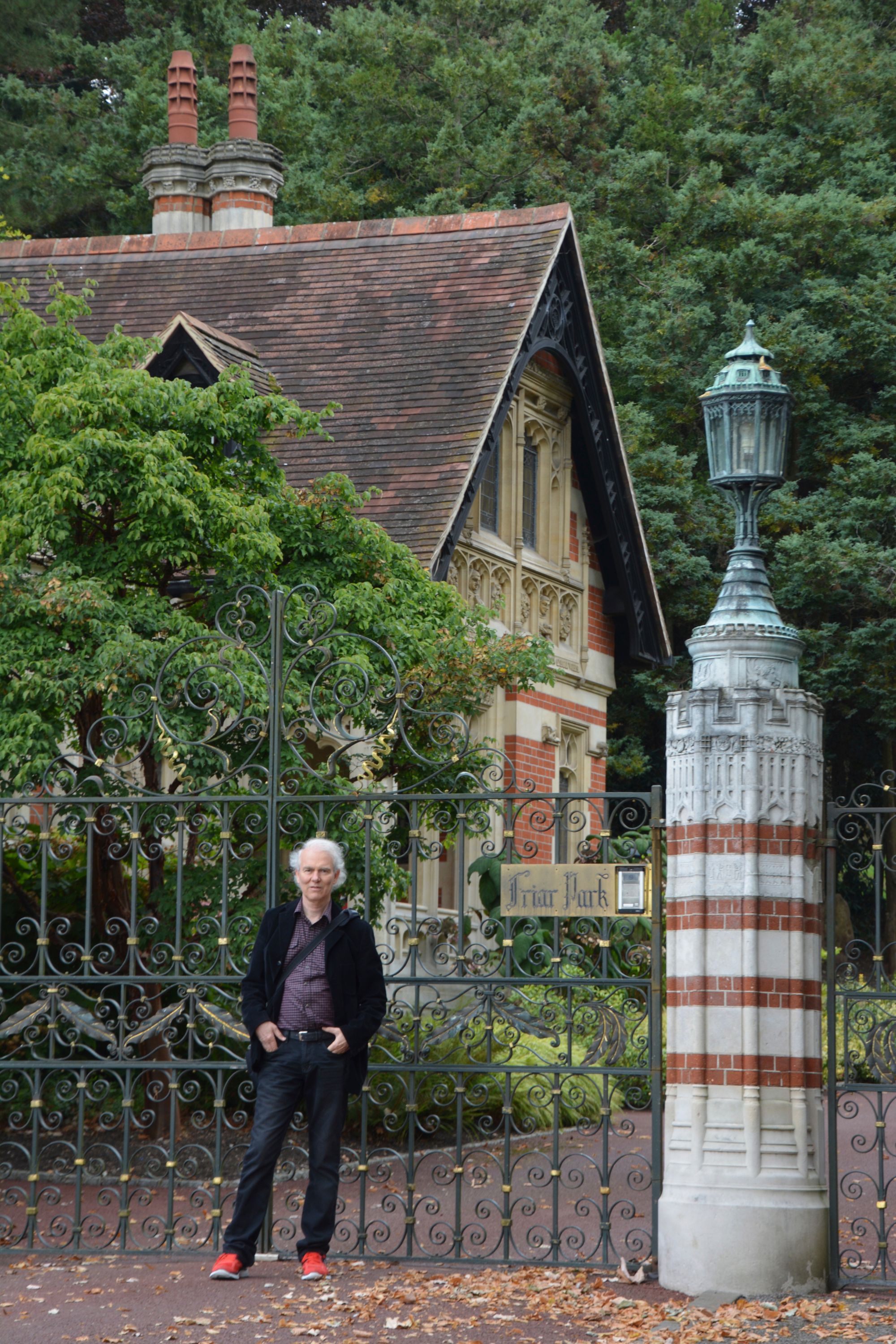
🚀 Where to Start - The Music
“Reality leaves a lot to the imagination”
- John Lennon
To appreciate The Beatles and their place in the world, you must start by listening to the music. Every album is a gem and each builds on the previous album adding new ideas and innovations. To get a feel for their amazing development, from Love Me Do to Abbey Road in seven short years, I suggest listening to each album closely and repeatedly in the following chronological order of release. I also suggest you first listen to a good amount of songs from the music charts of 1962 to give an idea of the context from which the band sprang – some No.1 songs from that year include Johnny Angel (Shelley Fabares), Roses Are Red (Bobby Vinton), and Monster Mash (Bobby ‘Boris’ Picket).
Please Please Me (1963)

Recorded to capitalise on their first No.1 single of the same name, this album contains 8 Lennon/McCartney originals among its 14 tracks, raising the stakes for other artists, who normally relied on songs obtained by professional songwriters. Opening with the Paul McCartney classic ‘I Saw Her Standing There’ and closing with John Lennon’s throat rasping version of ‘Twist And Shout’, this was a statement of intent and was recorded live in the studio over a 10 hour session. It marked the beginnings of Beatlemania and topped the UK charts for an unprecedented 30 weeks.
With The Beatles (1963)

Released in November, this album marked a distinct advance in production values. The band’s aim to give the buyer maximum value for their money is reflected in the fact that the album did not include any singles as it was felt that fans would have already purchased these. So it is amazing to think that such well-known quality songs as ‘All My Loving’ and ‘I Wanna Be Your Man’ (the first hit single recorded by The Rolling Stones) were not issued in this format. The album again includes 8 self-written numbers, including George Harrison’s first contribution ‘Don’t Bother Me’, and replaced Please Please Me at the top of the UK album charts, remaining there for another 21 weeks. This meant that the band were No.1 in the UK for a total of 51 weeks! With The Beatles became their first million seller and only the second album to sell a million records in the UK (the first being the South Pacific soundtrack album in 1958). From this point on, The Beatles also began to make use of the artistic possibilities of their album sleeves, with this album featuring an iconic photograph by Robert Freeman based on the style used by their friend Astrid Kircherr during their early Hamburg period.
A Hard Day’s Night (1964)

By the time this album was released in mid-1964, The Beatles had found worldwide success and had finally conquered America, where music buyers could not get enough of them. This album, starting with the famous distinctive opening chord of the title track, was their first to feature only Lennon-McCartney written songs, all of which showed their increasing sophistication, both lyrically and musically. It includes two Number 1 hits, A Hard Day’s Night and Can’t Buy Me Love, the former inspired by a Ringo Starr malapropism, and all the songs were written during a two-week break from touring and making the associated film. A major critical success, the album and film was highly influential on other musicians and the album regularly features in magazine lists (e.g. NME, Mojo, Uncut) of the Greatest Albums Of All Time.
Beatles For Sale (1964)

This album was released late in 1964 following an exhausting 12 months of constant worldwide touring, television and radio appearances, and filming of A Hard Day’s Night. The band also recorded a double A sided single, I Feel Fine and She’s A Woman, during these sessions and began experimenting in the studio with feedback, fade-ins, and the use of additional percussive instrumentation including tympani, African hand-drums and chocalho. The album spent 11 weeks at Number 1 in the UK and also spawned two more Number 1 hit singles with ‘Eight Days A Week’ in the US and ‘Rock And Roll Music’ in Australia. The album featured an innovative gatefold sleeve with a downbeat photograph of the group taken outside in the late afternoon sun, and described by music journalist Lois Wilson as, “the very antithesis of the early 60s pop star”.
Help! (1965)

Considered by many to be the end of phase 1 of The Beatles’s career, this soundtrack album to their second film was the last to be dominated by John Lennon’s songwriting, with Paul and George increasingly vying for a place as songwriters. Paul’s major contribution to this album is the song ‘Yesterday’, featuring for the first time on a Beatles album a string quartet, which went on to become the most covered song of all time. George Harrison also managed to place two of his songs on the album. John’s title track, ’Help!’, and ‘Ticket To Ride’ both made Number 1 in the UK and the US and the album was at Number 1 for 9 weeks. This became the norm for the rest of the group’s career with the exception of Sgt. Pepper’s Lonely Hearts Club Band (28 weeks at Number 1) and Abbey Road (13 weeks at Number 1). The Beatles’ albums spent a total of 176 weeks at the top of the UK charts, a remarkable and seemingly unbeatable record of 3 years and 20 weeks out of their 7 year career.
Rubber Soul (1965)

The innovative cover shot of The Beatles’ elongated faces for this album are the first indication that they are putting the frantic years of Beatlemania behind them and moving towards more experimental sonic directions and greater lyrical depth. It was the first time that the group had full creative control over an album and they made full use of sitar, fuzz bass, electric piano and other instruments to provide a more exotic feel to the material. George Harrison stated in 1995 that Rubber Soul was his favourite Beatles album. It includes two of his songs, ‘Think For Yourself’ and ‘If I Needed Someone’, the latter providing a minor hit for The Hollies. Opening with Paul McCartney’s soulful rocker, Drive My Car, the album also includes his ballad ‘Michelle’, John Lennon’s ‘Norwegian Wood’ utilising the first use of Harrison’s sitar on a Beatle album , and ‘In My Life’. ‘Norwegian Wood’ was released as a single in Australia and ‘Nowhere Man’ was released as a single in the US, both reaching Number 1. Many of the other songs on the album became hits as cover versions by other artists in 1966, with ‘Michelle’ being particularly popular. In 2000, Mojo Magazine readers voted ‘In My Life’ as the Best Song Of All Time.
Revolver (1966)

Released in August 1966, Revolver was the first album by The Beatles following their retirement from live performance, reflected in their increasing use of studio technology and building on the advances of their preceding album. It is generally regarded as one of the greatest and most innovative albums of all time and far ahead of anything being produced by their contemporaries. It reflected the broadening musical output of the time (think Hendrix, Kinks, Byrds, etc.) and the lyrics encapsulated the changing consciousness of the youth of the day. The easy listening romantic songs of old were now replaced by introspective musings on loneliness, economics, death, drugs and spirituality. Older members of their audience started to think the band had turned weird and found it hard to adapt but everybody loved the Number 1 single from the album, ‘Eleanor Rigby/Yellow Submarine’. The emerging teenyboppers of the day were finding the material too complicated and turned their affections to The Monkees, a manufactured group based on the image and style of The Beatles in the film Help! George Harrison contributed an unprecedented three songs to the album including the opening track, 'Taxman’, illustrating his rapid growth as a songwriter.
Sgt. Pepper’s Lonely Hearts Club Band (1967)

The release of Sgt. Pepper in mid-1967 marked a defining moment in 1960s pop culture due to its innovations in songwriting, production, graphic design and for bridging the divide between popular music and high art. A major influence on nearly everybody in the music business including competitors such as The Beach Boys, The Rolling Stones and Pink Floyd, it changed everything. It is no surprise then that 1967 became the first year that sales of albums exceeded those for singles. Jefferson Airplane’s Paul Kantner said, on hearing the album for the first time:
“Something enveloped the whole world and it just exploded into a renaissance”.
- Paul Kantner, Jefferson Airplane
The album dispensed with conventional structures and became the bedrock of the emerging progressive rock scene, at the same time giving birth to the idea of the concept album. The band’s Derek Taylor noted that it was the perfect album for the Summer Of Love despite it not including a single love song. Combining a vast eclectic palette of musical styles including psychedelic rock, Indian raga, English music hall etc,, the album became the best-selling ‘pop’ album of the time and spent half a year in the Number 1 position on the charts. It did not include any hit singles but everyone soon got to know such classic songs as ‘Lucy In The Sky With Diamonds’, ‘When I’m 64’ and ‘She’s Leaving Home’, which received regular airplay on the radio. Uncut magazine has stated: ‘The importance of Pepper to history is a matter of record. Its importance to those who love it is beyond measure and possibly language.’
Magical Mystery Tour (1967)

Originally released as a double-ep in the UK and other territories, this was the soundtrack of The Beatles Christmas television special of the same name and was the first project by the group following the death of their manager, Brian Epstein, in August 1967. The double-ep format did not exist in the US and the recordings were, therefore, extended in that country into a full length LP by the addition of 5 songs that had been released as singles that year. This version became the standard worldwide release when the group’s albums were released on CD in 1987. The music demonstrates the same studio experimentation and psychedelic orientation pursued by the group since the Revolver album and includes the John Lennon surrealist classic, ‘I Am The Walrus’, alongside chart-topping singles such as ‘Penny Lane’ and ‘All You Need Is Love’. The original double-ep reached Number 2 on the UK singles charts and was only kept from the top position by the group’s single. ‘Hello Goodbye’. The LP version topped the US charts for 8 weeks.
The Beatles (White Album) (1968)

This eponymously titled double-album marked a move away from the psychedelia of Sgt.Pepper. The latter’s album cover was the most expensive and ornate sleeve ever produced at the time, and for this album The Beatles took the opposite approach, adorning their new work with a totally blank white cover, hence its unofficial name of ‘The White Album’. However, it also came with a poster containing the full lyrics to the songs along with colour photographs of each member of the group. Most of the songs had been written during the band’s sojourn to India with the Maharishi Mahesh Yogi earlier in the year. It is notable for its diverse range of musical styles including folk, music-hall, blues, rock and electronica, and many consider it to be amongst the best albums of all time. George Harrison contributed four songs to the album including his classic guitar anthem, ‘While My Guitar Gently Weeps’. None of the album’s 30 songs were released as singles in the UK or US but ‘Ob-La-Di-Ob-La-Da / While My Guitar Gently Weeps’ was released in some countries including Australia, where it topped the charts for 5 weeks. The album has sold over 12 million copies in the US alone, a major achievement for a double-album.
Abbey Road (1969)

The last Beatles album to be recorded, Abbey Road was another worldwide Number 1 record and had sold 31 million copies by 2011. A contender for The Beatles’ best album, critics raved about the superb production values, musical performances and innovations including the extensive use of the newly invented Moog Synthesiser. It also marked George Harrison’s emergence as a songwriter of equal quality as John Lennon and Paul McCartney. His song, ‘Something’, was his first single A-side for the group and was described by Frank Sinatra as “the best love song ever written by Lennon & McCartney”. Harrison’s ‘Here Comes The Sun’ was equally as popular and, as of October 2021, was the most streamed Beatles song on Spotify with 707 million plays. Paul McCartney still includes the last part of the Abbey Road side 2 medley (‘Golden Slumbers/Carry That Weight/The End’) in his concerts, and John Lennon’s ‘Come Together’ is considered by Ringo Starr as the ultimate Beatles recording.
Let It Be (1970)

Let It Be, released as the last official Beatles album in 1970, was actually recorded earlier in January 1969 during a troubled period for the group. John Lennon was in the midst of a divorce from his first wife Cynthia and was growing increasingly disenchanted with his role in the group. George Harrison was also feeling disenchanted due to his perceived lack of respect from the other members of the group, particularly from Paul, and actually decided to leave the group during the recording sessions. Ringo Starr was branching out into a film career and Paul McCartney was finding it difficult to spur the others into action.
All were dissatisfied with the original recording environment of Twickenham Film Studios, chosen purely for the sake of making a film of the proceedings. Management problems were also beginning to be an issue and this period marks the entry of the controversial Alan Klein into their lives. Peter Jackson’s recent film making use of the original Let It Be footage, Get Back, beautifully documents these sessions and shows that, despite their personal problems, the band really loved to play music together.
The album is the group’s least popular, which has more to do with the raw, unfinished quality of the record compared to their shiny previously released album Abbey Road. It certainly is nothing to do with the material, which produced three classic Number 1 singles in ‘Get Back’, ‘The Long And Winding Road’ and the title track, ‘Let It Be’. Despite some hostile reviews at the time of its release, the album was another worldwide Number 1 hit with the songs receiving both a Grammy Award (Best Original Score Written for a Motion Picture or Television Special) and an Academy Award (Best Original Song Score).
Past Masters Vol. 1 & 2

A two-disc compilation of all the Beatles non-album singles, b-sides, and random tracks in chronological order, Past Masters Volumes 1 and 2 were originally released separately to correspond with the comprehensive CD release of the Beatles catalogue in 1988. It is not a Greatest Hits package as some of their biggest hits were also included on albums, but it does contain 10 number 1 hits, the original single recording of ‘Love Me Do’ with Alan White on drums and Ringo on maracas, and a number of b-sides such as ‘This Boy’ and ‘I’ll Get You’ that are anything but throwaway tracks.
This is probably the best short cut to hear the development of the band throughout the 1960s from their first single through such classics as ‘Hey Jude’, ‘Revolution’ and ‘Don’t Let Me Down’. It finishes with the quirky b-side of the ‘Let It Be’ single, “You Know My Name, Look Up The Number”, a comedy music-hall number by John Lennon featuring a saxophone solo by Brian Jones of The Rolling Stones. Paul McCartney told writer Mark Lewisohn in 1988 that this was probably his favourite Beatles track due to the memories it elicited for him.
📚 Books
“I’m really glad that most of our songs were about love, peace and understanding.”
- Paul McCartney
The Beatles’ story is rich and complex, with many interesting sidetracks that reflect the full tapestry of human experience. This story has been told in many ways in literally thousands of books by hundreds of authors. Although I hate to admit it, I have read far too many of these but, having done so, can now guide you to the most authoritative, reliable and intuitive books that will give you the best understanding of the phenomenon that is The Beatles. Below, therefore, is a list of what I consider the essential reading for a full Grokkist experience:
The Beatles: All These Years Vol.1: Tune In (Mark Lewisohn)

I consider Mark Lewisohn to be the world’s leading expert in all things Beatle. This extensive two-volume set (over 3500 pages), the first part of a proposed trilogy, constitutes the definitive history of The Beatles early years up to the end of 1962 and the release of their first single, ‘Love Me Do’. It includes a full family history of each member of the group and the cultural context in which they formed.
It is basically the story of The Beatles in Liverpool, England, before they became know to the world and is essential reading for anyone planning a visit to the various Beatle related landmarks in that city.
The Complete Beatles Chronicle (Mark Lewisohn)

Before Mark Lewisohn started work on his extensive biography of the group, he had already published a number of critically acclaimed books on The Beatles. This book, taglined “the only definitive guide to the Beatles’ entire career”, chronicles the activities of the group on a day-by-day basis from their formation in 1957 to Friday 10 April 1970, the day that Paul’s assertion that The Beatles had essentially split up made headline news around the world. It chronicles their stage performances, studio recordings, radio and TV appearances, and each film in which they were involved together or separately. The Beatles’ producer, George Martin, provides an introduction to the book in which he states:
“Time and time again he (Lewisohn) has proven that he knows far more about what we did and when we did it than any of us.”
- George Martin, Producer
The Beatles’ London (Piet Shredders, Mark Lewisohn, Adam Smith) (A guide to 467 Beatles sites in London)

This lovely little book is a delightful treasure trove of facts related to The Beatles' time in London, the place they lived, worked and played in throughout the sixties. Packed with rare photographs of the group taken in the various locations – 467 to be precise – and with maps and directions, it is the ideal source manual for any Beatle fan visiting the greatest city in the world. We all know about the Abbey Road Studios and associated zebra crossing but what about such locations as E.M.I. House where the proposed cover for the Get Back album was photographed or the Playhouse Theatre where they recorded many of their radio shows for the BBC? These and many more are included with lots of information about why each site is relevant to their story. The Beatles’ publicist and friend Derek Taylor described it as, “far and away the most interesting Beatles book ever assembled.
In His Own Write (John Lennon)
A Spaniard In The Works (John Lennon)

These two books of short stories, poems , drawings and puns by the intellectual Beatle, John Lennon, were first published in 1964 and 1965 respectively. I found them hilarious in my early teen years and they have kept a smile on my face ever since. This is how John satisfied his literary leanings in his early years before he found a way to incorporate his philosophical ideas into his songs. His writing style was favourably compared at the time to James Thurber, Edward Lear, Lewis Carroll and even James Joyce. The books were a critical and commercial success and received critical acclaim in such publications as The Sunday Times and The Observer. Following publication of the first book, Lennon was honoured at one of Foyle’s Literary Luncheons at the Dorchester Hotel in London. Around 600 people attended including some eminent guests such as Yehudi Menuhin and Helen Shapiro. Lennon was invited to give a speech as was the tradition, but to the bewilderment of the audience, stood and said simply, “Thank you very much and God bless you. You’ve got a lucky face.” That’s a moment I would have loved to experience first hand.
The Beatles: The Authorised Biography (Hunter Davies)

Originally published in September 1968, and written with the full cooperation of The Beatles, this is the only official biography of the group. Like all official biographies, it omits many details that members of the group probably preferred to forget about at the time, especially as it came out at the peak of their career during the recording of the White Album. John Lennon later criticised the book in Rolling Stone as part of the sanitising of the Beatles public image. Nevertheless, it is essential reading due to the fact that Davies, a journalist, had unprecedented access to the group and their partners at the time, was present at songwriting and recording sessions for the Sgt. Pepper album, and became a friend who accompanied them to Bangor for their first meeting with the Maharishi Mahesh Yogi and briefly appears in the film Magical Mystery Tour. It has been suggested that Alan Klein used the book to get some background on Lennon’s self-image to enable him to frame a convincing argument for Lennon to place his trust in him as the band’s potential future manager.
One, Two, Three, Four: The Beatles In Time (Craig Brown)

A brilliantly executed study of cultural time, social space and the madness of fame
- Literary Review
Published in 2020, this is a surprisingly entertaining collection that adds lots of sparkle and wit to otherwise well-known vignettes and stories. Craig Brown won the Baillie Gifford prize, the UK’s top award for non-fiction, for this remarkable book. He satirically describes many of the places the band played and talks to fans and other characters with a role in their story, such as the policeman who tried to moved them off the roof of Apple during their last public performance. He investigates many of the minor players such as Jimmy Nicol, who stood in as drummer for an ailing Ringo during the band’s Australian tour. He investigates the phenomenon of Beatles tribute bands and also tracked down the unfortunate policeman who ran down and killed John Lennon’s mother, Julia, but didn’t discover her identity until many years later. Probably, my favourite section is the part where Brown visits the Liverpool childhood homes of John Lennon and Paul McCartney and ends up in an altercation with the National Trust caretakers of the properties in relation to the rule forbidding taking photographs. Definitely a page-turner!
The Longest Cocktail Party: An Insider Account Of The Beatles And The Wild Rise And Fall Of Their Multi-Million Dollar Apple Empire (Richard DiLello)

Written by the Apple Corps house-hippie and published in 1973, this book is Richard DiLello’s personal account of the history of The Beatles utopian organisation, the break-up of the band, and the commencement of their individual solo careers. DiLello’s official position at Apple Corps was ‘Client Liaison Officer’ from 1968 to 1970, which involved direct contact with members of the band, their wives and girlfriends, agents, managers and others.
The book details the many crazy management decisions, the excessive parties, the hangers-on, the launch parties for newly signed artists like Mary Hopkin, and the hilarious Christmas Party with the Hells Angels in attendance. There is an excellent account of the period where Alan Klein takes over management and rationalises the organisation leading to the eventual closing of the Apple Press Office.
For me, the book encapsulates the optimistic times in which Apple was created to inspire and support creativity in all its manifestations and then the sad feeling when the forces of capitalism move in and reduce the Apple empire to just another profit-making business. Blue Meanies indeed!
📍 Places
Liverpool
Liverpool, as the place The Beatles grew up and started their career, is a must visit for anyone with an interest in the band. If you have time, grab a guide or take a tour, but make sure you visit the following places, which can easily be accomplished in one day:
- 20 Forthlin Road (Childhood home of Paul McCartney, owned by National Trust)
- Mendips, Menlove Ave (Childhood home of John Lennon, owned by National Trust)
- The Casbah Coffee Club, 8 Hayman’s Green (Created by the mother of original Beatles drummer Pete Best and a regular performance spot of the early Beatles)
- The Cavern Club, 10 Mathew St (Where The Beatles were discovered by manager Brian Epstein)
London
The Beatles moved to London in 1963 and spent the rest of their career in and around the city. There are hundreds of Beatle-related places to visit but the following are essential and, again, can easily be visited in one day:
- Abbey Road Studios (Site of virtually all of The Beatles’ recording sessions and close to the zebra crossing used for cover of the famous album cover)
- 7 Cavendish Avenue (Paul McCartney’s London home, a short walk from Abbey Road Studios)
- Apple Corps headquarters, 3 Saville Row (Site of the famous rooftop concert)
- Apple Boutique, 94 Baker St (Site of the ill-fated Apple store and original headquarters of Apple before it moved to Saville Row)
🎬 Film / Video
The Beatles dabbled regularly in films and video production to varying degrees of success. In addition, there have been countless films and documentaries made about them. Generally, you should focus on productions officially sanctioned by Apple Corps, which sets extremely high standards for Beatles related products and has an immense archive of official material not available to other producers without license.
A Hard Day’s Night

The Beatles’ first feature film and an amazing testament to what can be achieved by talented people on a limited budget. Based on the simple premise of a day in the life of The Beatles, it was surprisingly successful and created a new high standard for films by and about pop musicians, which had previously been pretty dire. Apart from the obviously high quality music incorporated in the movie, the Beatles proved to be charismatic and funny actors who made the dialogue by Liverpool playwright, Alun Owen, their own.
Director Richard Lester used innovative and influential cinematography to film the group and in 1984 was awarded the title of ‘Father of the Music Video’ by MTV, a title he despised. The film was nominated for two Academy Awards, was a major critical and commercial success, and was rated as one of the 100 All-Time Great Movies by Time magazine. In 1999, the British Film Institute ranked it as the 88th greatest British movie of the 20th Century. I have seen the film countless times but fondly remember the first time at the cinema in 1964 when I could only get standing room tickets and was unable to hear the sound due to the screaming that started with the film and continued throughout.
Help!

The Beatles’ second film, although made in colour as a result of a bigger budget, is generally regarded as inferior to the first. It involves a slight plot involving a sacrificial ring that Ringo is wearing but, despite the use of director, Richard Lester, it is mainly the music and personality ofThe Beatles’ that makes it interesting. John Lennon later described it a pre-cursor of the television Batman Pow! Wow! style, which is a fair description. It certainly was the inspiration for the following year’s Monkees TV show and the cinematography and colourful locations are of the same ilk as the 1960s James Bond films and other lightweight films of the day. It was during filming of Help! that George Harrison first encountered the sitar, an incident that changed the course of popular music for the next few years.
Magical Mystery Tour

Made as a Christmas television special in 1967 and originally broadcast in black & white, Magical Mystery Tour was the first time The Beatles work was seriously criticised. For me, it is a charming home-movie made by the band, who had no previous experience with film production and editing. It shows them at a critical period of their career following the death of Brian Epstein and beginning to move slowly out of their psychedelic period. The inclusion of footage of the band performing ‘I Am The Walrus’ makes it essential viewing but there are other great moments such as John and Ringo's interactions with a woman who is supposedly Ringo Aunt Jessie (Jessie Robins). Time has been kind to the film, which was remastered and released on DVD in 2012 and entered the Billboard Top Music Video Chart at Number 1.
Yellow Submarine

Produced and released as a contract filler, Yellow Submarine is an animated film that had little direct input from The Beatles other than the contribution of four new songs and a short filmed segment at the close of the movie. Pixar co-founder John Lasseter has credited the film with bringing more interest in animation as a serious art form and it is still regarded as a landmark in the field today. John Lennon said it was his favourite Beatle movie and regularly made reference to the film’s evil Blue Meanies in interviews when discussing shady characters. The film was a critical and commercial success and continues to be popular with children and adults to this day.
Let It Be (Michael Lindsey Hogg)
Get Back (Peter Jackson)


The original Let It Be film was of less than 90 minutes duration and, due to its release after the band disbanded, was edited to focus on the problems within the group that led to its demise. The end of The Beatles was a traumatic event for many and the film has long been associated with such negative emotions. The group members did not like the way they were portrayed in the film, particularly Paul and George, and have resisted its release on DVD and other formats.
The film has incorrectly informed many of the historical books discussing the end of The Beatles and even insiders such as George Martin and countless others have bought into the myth that the sessions recorded were joyless and a pre-cursor to the break-up.
Thankfully, director Peter Jackson was given the task of revisiting the original material and producing a new edit. In his usual Lord Of The Rings style, he has produced the definitive 8 hour version, which amazingly still omits a large portion of the original film. The film is a triumph of restoration and allows the viewer to be inside the room with the band as they develop and record new songs for the album, culminating in the full performance on the Apple rooftop. Although there is some tension along the way, particularly when George Harrison temporarily leaves the group after an altercation with Paul McCartney, the band appear to be having a great time throughout and it is obvious that, despite any personal and business issues, they genuinely love playing together.
Both films deserve a viewing and the original film and audio recordings are to the credit of the original director and sound engineer, Michael Lindsey Hogg and Glyn Johns respectively. But Jackson’s is the definitive version and is a joy to behold. It rewrites Beatle history and shows the band as real people but also demonstrates their incredible musical abilities even under pressure.
Eight Days A Week: The Touring Years (Ron Howard)

This film documents the Beatles as a live act from 1962 to 1966 using rarely seen footage, restored fan home movies, and interviews with fans and members of the band. Produced with the full cooperation of the Beatles and their families, the participation of Director, Ron Howard, ensured that the relevant quality was maintained. The film was a critical and commercial success and received several awards and nominations including 'Best Documentary’ at the British Academy Film Awards and ‘Outstanding Documentary or Nonfiction Special’ at the Primetime Creative Arts Emmy Awards.
The First U.S. Visit (Maysles Brothers)

This is a particular favourite and is a fly-on-the-wall 90 minute documentary in the same style as Bob Dylan’s ‘Don’t Look Back’, released the following year. It follows the group as they arrive in the US on their first visit in February 1964, which includes a live concert at Washington DC and several performances on the Ed Sullivan Show. We see them riding in taxis and trains, listening to themselves on the radio, doing telephone interviews with UK journalists, and interacting with the press and fans. The documentary captures well those first frantic moments when the band had the world at their feet and were still enjoying it.
Beatles 1+ (The Video Collection)

Built around the original CD of Beatles Number 1 hits, this collector’s version brings together 50 music promotion clips and performances recorded by The Beatles in the 1960s including different versions of such songs as “Hello, Goodbye” and “Rain”. The original album sold 30 million copies and topped charts around the world. It is amazing to think that The Beatles virtually invented the idea of promotional clips at a time when performers would normally have to appear on various television shows to promote their songs. It was only because of the immense and unrealistic demand for the band to do so that it became necessary to find a solution, which was to record a clip for use by all television shows. A full description of each audio and video track is available here.
The Beatles Anthology

Originally released in 1995 as a six-part television series, this extended DVD project contains over 11 hours of Beatles footage, newly recorded interviews with the surviving group members, archival interviews with John Lennon, and two newly recorded songs featuring all four members of the group based on previously unreleased cassette recordings by John provided by Yoko Ono. As with all official Beatle releases, the only complaint is that it is not long enough! The series tells the story of the group from the group’s perspective with the only non-Beatle interviews being with their long-time road manager and offsider Neil Aspinall. As such, it is more a celebration of their history than an in-depth biography. Nevertheless, it is a glorious way to spend a few hours as it is loaded with rare television appearances, news items, stage performances and home movies. A particular treat is the inclusion of conflicting versions of some stories by each group member illustrating how memories can morph over time. Paul McCartney appears to be particularly prone to this, with one example being his often repeated statement that The Beatles would not visit the US until the group had a Number 1 record in that country. In fact, the contract for The Beatles’ performance on the Ed Sullivan Show was negotiated by Brian Epstein on 5 November 1963 but their first Number 1 in the US, ‘I Want To Hold Your Hand’, was not released until late December 1963!

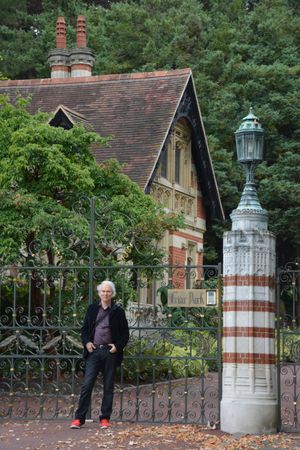
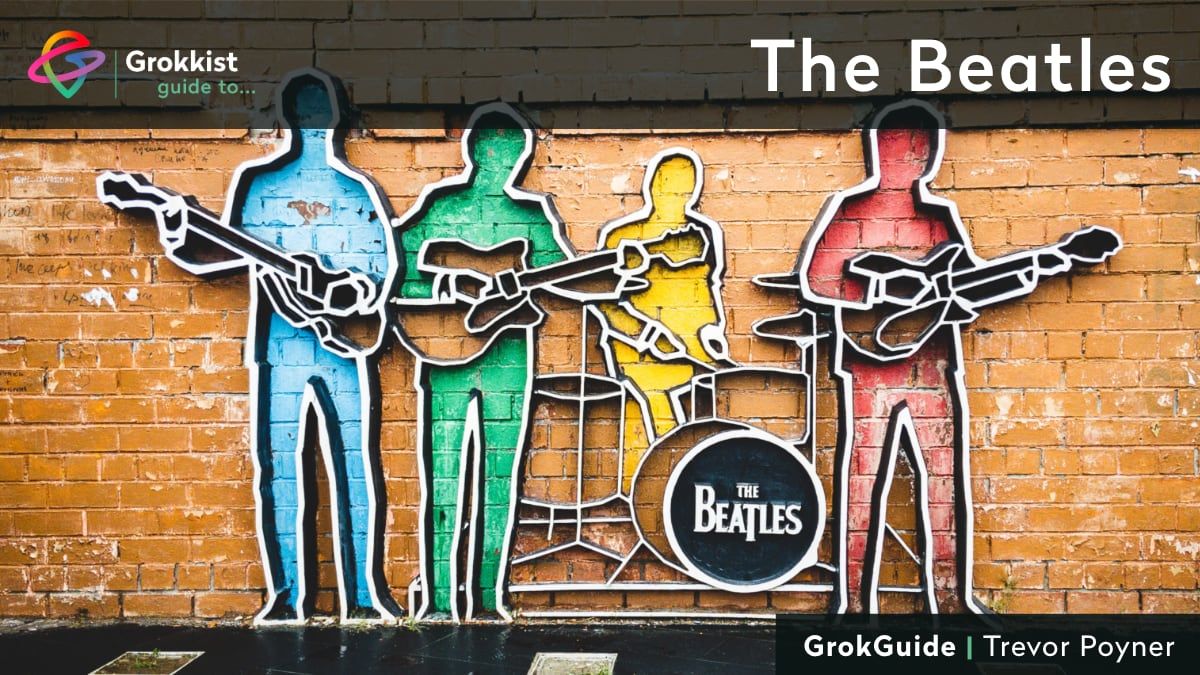
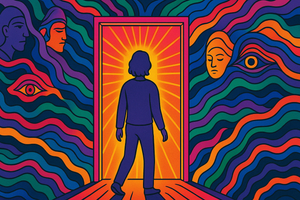

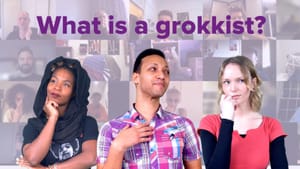

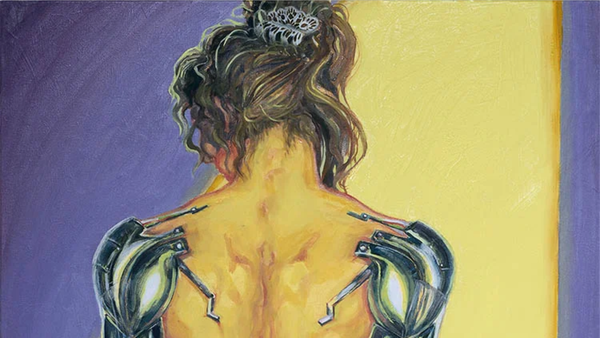
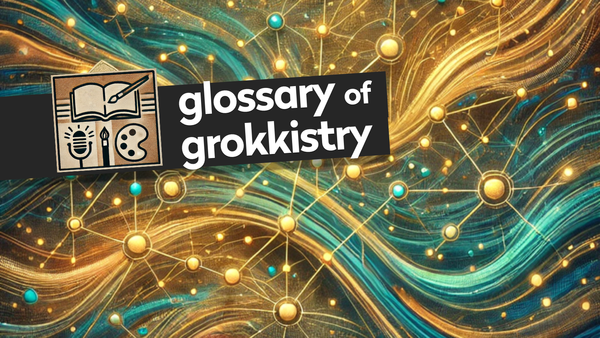



Member discussion